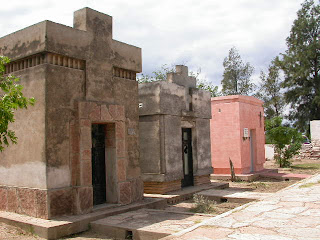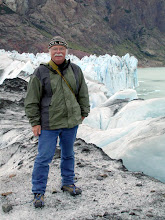 During my just-completed South American journey I discovered a rather remarkable piece of art hanging from a pillar inside La Escalera, which is one of the most thorough gift shops in the Argentine city of Cafayate, in Salta province. This piece is a solid piece of wood planking nearly 1" thick and measuring roughly 18"x24". The above image is mounted on the wood base and comes from a vintage 1937 calendar that had been published by the Argentine textile giant, Alpargatas Textil (aka the Sociedad Anónima Fábrica de Alpargatas, founded in 1883), who specialize in gaucho clothing, and especially the manufacture of the distinctive rope-soled gaucho sandals, known as alpargatas.
During my just-completed South American journey I discovered a rather remarkable piece of art hanging from a pillar inside La Escalera, which is one of the most thorough gift shops in the Argentine city of Cafayate, in Salta province. This piece is a solid piece of wood planking nearly 1" thick and measuring roughly 18"x24". The above image is mounted on the wood base and comes from a vintage 1937 calendar that had been published by the Argentine textile giant, Alpargatas Textil (aka the Sociedad Anónima Fábrica de Alpargatas, founded in 1883), who specialize in gaucho clothing, and especially the manufacture of the distinctive rope-soled gaucho sandals, known as alpargatas.The verse that accompanies the image comes from the epic gaucho poem Martín Fierro (1872), by José Hernández, and the subtitle to the image itself is "El Boliche de Virtú," which translates into the "little shop of virtue." The four phrases included are excerpted from canto IV of the poem, and relate to the relative importance of this little business for the goods (drinks and items to consume as food or medicinals) the pulpero serves to his clients.
The mounted piece appears as a truly striking work of art, and although I could find out little on the original artist, whose signature on the image is "Lavattaro," a name of Italian origin, the artist who mounted and laminated the image is a Cafayate local named Hector Habrhan. Later editions of the calendar published by this same textile company were illustrated by the famed F. Molina Campos.
Anyway, even though it was a piece of relative substantial size and substance, I could not resist buying it and bringing it back with me. As it was, the package barely fit inside the larger of my two suitcases, so I was lucky in that regard for not having to pay an exorbitant fee for shipping. Instead, it took up quite a bit of luggage space while making that particular suitcase even heavier than it had been at the time of my departure.
My purpose with this piece of art is not to further clutter up my already over-full wall space in my small home but rather, to be a donation to the Western Folklife Center, which is the organization which puts on the famous National Cowboy Poetry Gathering, held every year in Elko, Nevada. A couple of years ago they featured the work of several gaucho artists, and last December they sponsored a folklife exchange visit to Brasil and Argentina.
It is my intention that this piece will be sold at the Silent Auction, which takes place every year during the Gathering as a means of generating funds that go towards the continued operation of the Folklife Center. And for donors such as myself, in this case, it becomes a tax-deductible donation.
Anyway, I should say that from time to time I will plan to post additional materials here on this blog that might pertain to some aspect of South America, either something that came directly from my travels, or perhaps something of interest that relates to the region in general. In other words, even though I am home now, I will try to keep the blog going, so please, feel free to visit from time to time. Chao, amigos.



 Now here´s more Tango, for those of you out there who are total music history freaks: That´s the immortal "founder" of the tango, the great Carlos Gardel, whose music still reverbrates loudly down in these parts, especially in Argentina.
Now here´s more Tango, for those of you out there who are total music history freaks: That´s the immortal "founder" of the tango, the great Carlos Gardel, whose music still reverbrates loudly down in these parts, especially in Argentina. 
.jpg)















